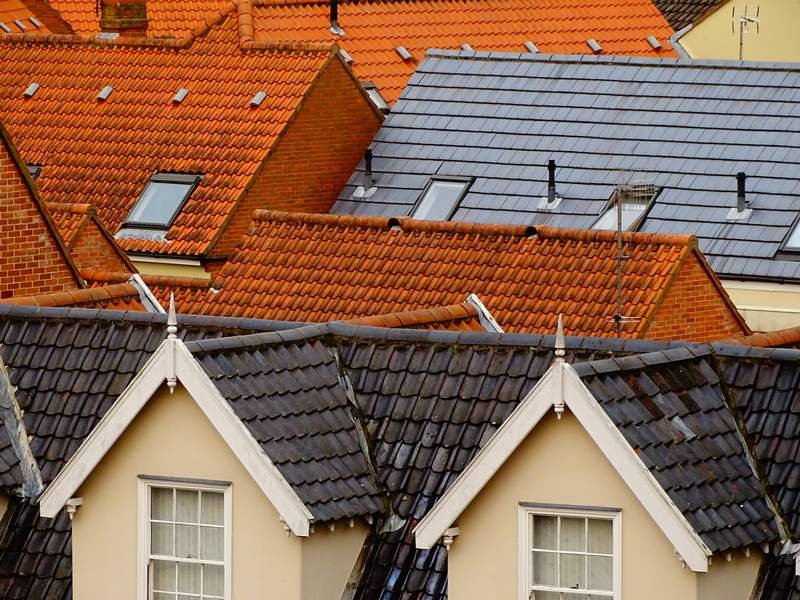Table of Contents Show
A water leak in your roof can’t be ignored. When it rains, moisture enters your home, and you know it’s time to call a roofing contractor.
However, there are less obvious signs that your roof is failing too. Some can be fixed simply on your own, preventing further costly repairs. Others are red flags that indicate it’s time to schedule a roof inspection. Let’s dig into the possible causes.

Read Also:
The Roof Vent is Rusted
Are the plumbing vent boots damaged? To determine this, check if the plastic bases are cracked or the seams of the metal bases are broken. The next step is to examine the rubber boot that surrounds the pipe.
They can easily become torn or rot away, which allows moisture to work its way into the home along the pipe. The fix for this problem is to buy a new vent boot to replace the old one.
There are Water Stains on the Ceiling
A water stain extending across ceilings or running down walls is a clear warning sign you have a leaky roof. Finding the source of the leak can be challenging, but it’s worth seeing to. Even if you are planning on replacing your roof shortly, repairing the leak should be a priority.
Even a small leak can cause mould damage, rot the frames, or destroy insulation. The common types of leaks are as follows:
- If the stain on the ceiling is small or you can see any visible flow marks, look on the underside of the roof. A shiner refers to a nail that missed the member of the frame. The metal nail can lead to drips through condensation. To solve this clip it with side-cutting pliers.
- Damaged tiles. A broken tile isn’t only a leak waiting to happen; it ruins the look of your home. Get it fixed a.s.a.p.
- Soffits that are dirty or clogged. A clear soffit helps to prevent a situation where moisture builds up and causes mould to grow in the roof’s framing.
There is Rot on the Roof Edge or Side Wall
You will typically find kickout flashing where a roof edge meets a sidewall. This enables runoff water to be directed, so it doesn’t flow down (or into) the wall.
The lack of kickout flashing can be particularly problematic when there is a door or a window below. The water then seeps behind the trim leading to rotting.
The Gutters are Rusted
Rust can creep in when seams open up due to expansion and contraction. You can stop the leak by simply covering the area that is damaged with roof and gutter repair tape. It’s important first to remove the rust using a wire brush.
There are Issues with the Roof Vents
If you discover cracked housings on plastic roof vents or broken seams on metal ones, the best option is to replace the damaged vents.
The Flashing is Loose
Flashing is used along walls where it intersects the roof to channel water downhill from it. If the flashing rusts or comes loose, moisture will run behind it and enter the home.
There is Mould on the Exterior Walls
If you discover mould growing on the outside walls of your home, it could be a sign you have a leaky roof. Other common causes are downspouts that empty next to the wall.
There is a Hole in the Roof
It may seem crazy that someone would drill a hole into your roof on purpose. However, it’s common. Think about installing satellite dishes or antennas on mounted brackets. When these are removed, the roof can be left with a hole. If you’re moving into a new property, this is something to consider.
The Gutter Apron is Missing
When water flows off the edge of a roof, some of it clings to the underside of the tile and flows towards the fascia. A gutter apron prevents this from happening. If you don’t have gutter aprons, the fascia, soffits, and roof sheathing will eventually rot. Look out for signs of water stains below the gutter on the fascia and soffit.
The Chimney Flashing is Rusted
Brick chimneys are notorious for being the source of roof leaks. Galvanised steel used for lashing around chimneys can rust through, typically at the 90-degree bend at the bottom.
There is Hail Damage
Hail damage isn’t only concerning when it causes a hole. A knock can cause a tile to lose its protective layer, and eventually, UV rays from the sun begin to damage it.
If you’re concerned that there might be an issue with your roof, but don’t know which of these subtle signs could be the root cause, it might be advisable to schedule a roof inspection with Rooflines and have them provide you with a professional opinion and advice towards repairing your roof before the problem worsens and more damage sets in.









